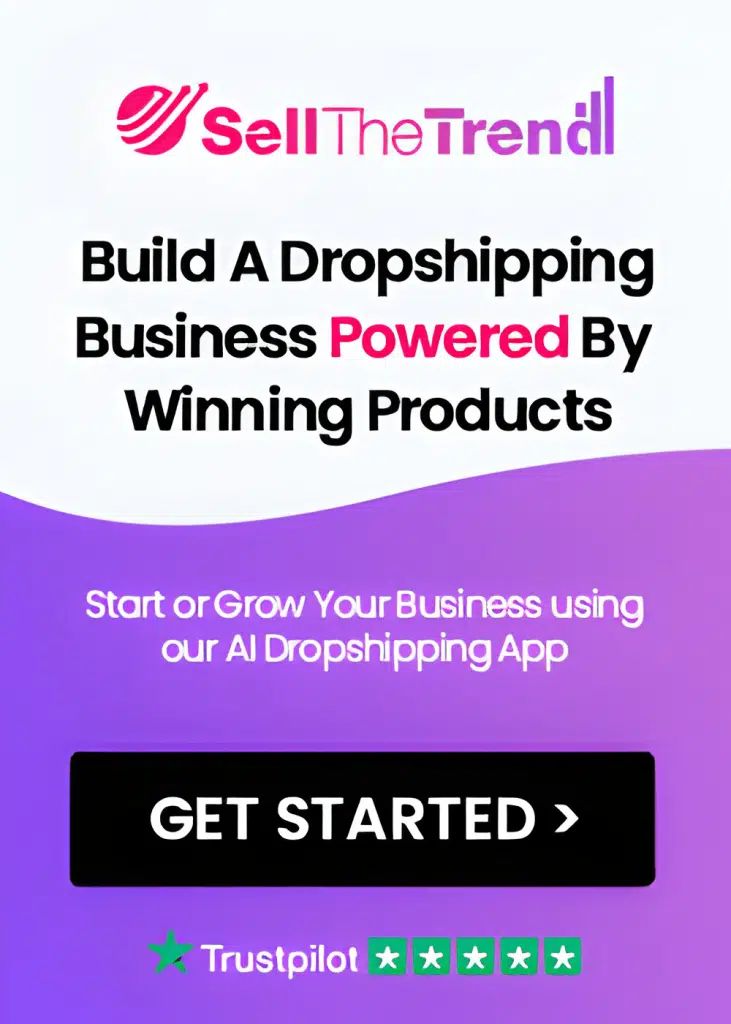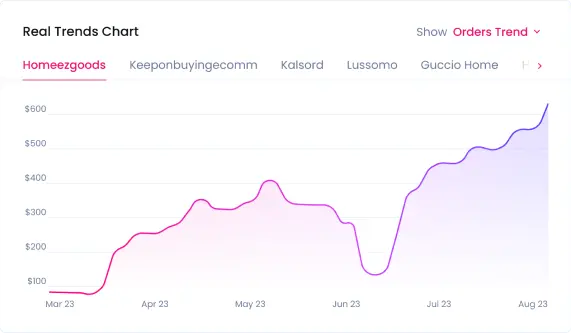Zero-Cost Dropshipping – Easy Steps to Get Started
Contents

Entering the dropshipping world can seem daunting, especially when you’re starting with no money. The good news is that with strategic planning and the right resources, you can kickstart a successful dropshipping business without a hefty investment. In this comprehensive guide, we’ll walk you through the step-by-step process of starting your dropshipping venture with no financial burden, using Sell The Trend’s resources and tools.


How Does The Dropshipping Business Model Work?
Dropshipping is a business model where the seller doesn’t keep goods in stock. Instead, the seller purchases inventory as needed from a third party—usually a wholesaler or manufacturer—to fulfill orders. This model allows you to start an e-commerce business without investing heavily in inventory.
Key Benefits of Dropshipping:
- Low Startup Costs: Since you don’t have to purchase inventory upfront, you can start with minimal financial investment.
- No Need for Storage: You don’t need to worry about warehousing or storing products.
- Wide Product Range: You can offer a wide variety of products to your customers without buying them first.
- Flexible Location: You can run your dropshipping business from anywhere with an internet connection.
Steps to Start Dropshipping with No Money
1. Conduct Free Product Research
Identifying profitable products is crucial to your dropshipping success. Use free tools and strategies to conduct thorough product research.
Free Product Research Methods:
- Google Trends: Identify trending products by analyzing search data.
- Social Media: Platforms like Instagram, Facebook, and TikTok are great for spotting trending products.
- Competitor Analysis: Look at successful dropshipping stores and see what products they are selling.
- Free Tools from Sell The Trend: Use Sell The Trend’s product research tools to find winning products without spending money.
Detailed Steps for Product Research:
- Analyze Trends: Use Google Trends to check the popularity of products over time. Look for products with consistent or rising interest.
- Social Listening: Monitor social media platforms to see what influencers and users are talking about.
- Engage in Online Communities: Join forums, Facebook groups, and Reddit communities related to your niche to see what products are popular.
- Check Marketplaces: Explore best-sellers on Amazon, eBay, and AliExpress to identify potential winning products.
2. Choose Reliable Suppliers
Your suppliers are your business partners in dropshipping. Selecting reliable suppliers is essential to ensure timely delivery and product quality.
Key Factors to Consider:
- Product Quality: Ensure the supplier offers high-quality products.
- Shipping Times: Check the shipping times to ensure they meet your customers’ expectations.
- Return Policies: Make sure the supplier has a clear return policy.
- Reviews and Ratings: Look for suppliers with positive reviews and high ratings.
How to Find Suppliers:
- AliExpress: A popular platform for finding dropshipping suppliers.
- Sell The Trend Supplier Network: Use Sell The Trend’s extensive network to find reliable suppliers.
- Directories: Use supplier directories like SaleHoo and Worldwide Brands.
Checklist for Evaluating Suppliers:
- Check Product Reviews: Read reviews to gauge product quality and supplier reliability.
- Order Samples: Order samples to check the product quality yourself.
- Communicate: Reach out to suppliers to assess their responsiveness and professionalism.
- Compare Prices: Ensure the supplier’s prices allow for a reasonable profit margin.
3. Set Up Your Online Store
Setting up your online store is the next step. Fortunately, many platforms offer free trials and affordable plans to help you get started.
Choosing a Platform:
- Shopify: Known for its user-friendly interface and extensive app ecosystem. Offers a 14-day free trial.
- WooCommerce: A customizable, open-source platform that integrates with WordPress.
- BigCommerce: Offers a range of features suitable for dropshipping.
- Wix and Squarespace: Both platforms offer free trials and user-friendly interfaces.
Setting Up Your Store:
- Sign Up for a Free Trial: Take advantage of free trials to set up your store.
- Choose a Theme: Select a theme that reflects your brand and enhances user experience.
- Add Essential Plugins: Install necessary plugins for SEO, email marketing, and social media integration.
- Create Product Listings: Add products with high-quality images, detailed descriptions, and clear pricing.
Design Tips:
- Keep It Simple: A clean, simple design improves user experience.
- Mobile-Friendly: Ensure your store is mobile-responsive.
- Optimize for SEO: Use keywords in product titles and descriptions to improve search engine rankings.
- Trust Signals: Include trust badges, customer reviews, and secure payment icons to build trust.
4. Import Products to Your Store
Once your store is set up, it’s time to populate it with products. You can do this manually or use automated tools.
Manual Import:
- Add Products Manually: Copy product details from your supplier’s website and paste them into your store.
- Customize Listings: Ensure product titles, descriptions, and images are optimized for your audience.
Automated Import:
- Sell The Trend Tools: Use Sell The Trend’s product import tools to add products to your store automatically.
- Benefits of Automation: Saves time, reduces errors, and ensures your listings are consistent.
Optimizing Product Listings:
- High-Quality Images: Use clear, high-resolution images that showcase the product from multiple angles.
- Detailed Descriptions: Write detailed product descriptions highlighting features, benefits, and usage.
- Keywords: Include relevant keywords to improve search engine visibility.
- Pricing Strategy: Set competitive prices that allow for a healthy profit margin.
5. Implement Free Marketing Strategies
Marketing is crucial to drive traffic to your store and generate sales. Fortunately, there are many free marketing strategies you can use.
Free Marketing Strategies:
- Social Media Marketing: Use platforms like Facebook, Instagram, and Pinterest to promote your products.
- Content Marketing: Start a blog related to your niche and publish valuable content to attract organic traffic.
- Email Marketing: Collect email addresses and send newsletters, promotions, and updates to your subscribers.
- SEO: According to UppercutSEO, always Optimize your website and product listings for search engines to drive organic traffic.
- Influencer Partnerships: Collaborate with influencers in your niche to promote your products.
Detailed Marketing Steps:
- Social Media Presence: Create profiles on major social media platforms and engage with your audience regularly.
- Content Creation: Write blog posts, create videos, and share user-generated content to build your brand.
- Email Campaigns: Use free email marketing tools like MailChimp to send regular updates to your subscribers.
- SEO Best Practices: Use keyword research tools to identify relevant keywords and incorporate them into your content.
- Leverage Influencers: Reach out to micro-influencers who align with your brand and negotiate collaborations.
6. Fulfill Customer Orders Quickly
Fulfilling orders promptly is essential to customer satisfaction and repeat business. There are different methods to fulfill orders, each with its pros and cons.
Manual Fulfillment:
- Process Orders Yourself: Place orders with your supplier manually each time a customer makes a purchase.
- Update Tracking: Manually update tracking information for each order.
Automated Fulfillment:
- Sell The Trend Tools: Use Sell The Trend’s automation tools to handle order fulfillment.
- Benefits of Automation: Saves time, reduces errors, and ensures timely updates.
Order Fulfillment Tips:
- Communicate with Suppliers: Maintain open communication with your suppliers to ensure smooth operations.
- Monitor Inventory: Regularly check your supplier’s inventory levels to avoid stockouts.
- Update Customers: Keep customers informed about their order status and provide tracking information promptly.
- Handle Returns Efficiently: Have a clear return policy and handle returns quickly to maintain customer satisfaction.
7. Offer Excellent Customer Support
Providing excellent customer service is crucial to building a loyal customer base and encouraging repeat purchases.
Customer Support Strategies:
- Multiple Channels: Offer support via email, live chat, and phone.
- Quick Responses: Respond to customer inquiries promptly.
- Clear Communication: Keep customers informed about their order status and any issues that arise.
- Resolve Issues: Handle complaints and issues quickly and efficiently.
- Follow-Up: Follow up with customers after their purchase to ensure satisfaction and gather feedback.
Building a Customer Support System:
- Use Help Desk Software: Implement help desk software to manage customer inquiries efficiently.
- Create an FAQ Section: Develop a comprehensive FAQ section on your website to address common questions.
- Automate Responses: Use chatbots to handle basic inquiries and free up time for more complex issues.
- Train Your Team: If you have a team, ensure they are trained in customer service best practices.


Tips for Success in Dropshipping with No Money
Test and Adjust: Continuously test different products and marketing strategies. Use analytics to understand what works best for your business and make necessary adjustments.
Engage with Your Audience: Build a community around your brand. Engage with your audience on social media and through email marketing.
Focus on SEO: Optimize your website for search engines to drive organic traffic. Use relevant keywords, create valuable content, and ensure your website is user-friendly.
Learn and Adapt: Stay updated with the latest trends in dropshipping and e-commerce. Join forums, read blogs, and take online courses to improve your skills.
Leverage Free Tools: Utilize free tools and resources to manage and grow your business. Sell The Trend offers a range of free tools to help you succeed.
Frequently Asked Questions
Can I Really Start Dropshipping With No Money?
Yes, by leveraging free trials, low-cost tools, and free marketing strategies, you can start your dropshipping business without significant upfront investment.
What Are the Best Free Tools for Dropshipping?
Some of the best free tools include Google Trends, social media platforms, and free trials from Shopify and Sell The Trend.
How Can I Drive Traffic to My Store for Free?
Utilize social media marketing, start a blog, and engage in forums related to your niche. SEO optimization is also crucial for driving organic traffic.
What Are the Different Dropshipping Fees?
Dropshipping fees can vary depending on the platforms and services you choose. Common expenses include selling channel fees, such as listing and transaction fees on marketplaces like Amazon or eBay, which can range from a few cents to a percentage of the sale. Aside from that, there are marketing fees, such as advertising costs on platforms like Facebook or Google Ads, that you may incur to promote your products and drive traffic to your online store. Additionally, some dropshipping platforms may charge monthly subscription fees or transaction fees for each order processed.
What Is The Best Platform To Start Dropshipping On? Choosing the best platform to start dropshipping depends on your specific needs and preferences. Shopify is popular due to its user-friendly interface, extensive app integrations, and dedicated dropshipping features. Likewise, WooCommerce is also a customizable platform and integrates seamlessly with WordPress. Other popular venues include eBay, Facebook, Etsy, and Amazon.
Conclusion
Isn’t it amazing how it’s possible to kickstart a thriving dropshipping venture, even without an upfront investment? The path to starting dropshipping with no money may seem daunting initially, but with our outlined strategies and tips, we hope it now feels within your grasp. Thus, remember, every great journey begins with a single step, so don’t let your current financial situation deter you from starting your online business.









